Make Your Own Frozen Tofu
Suwa Area Chino CIty
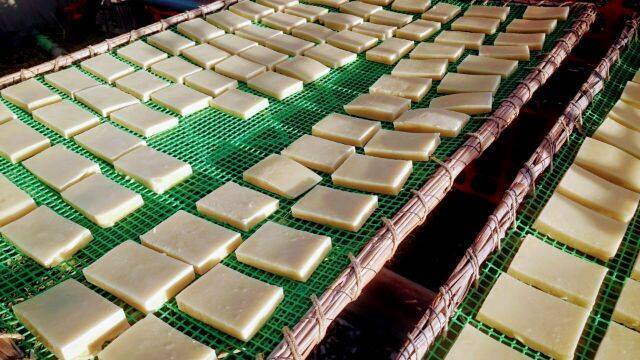
In the cold region of Suwa in central Nagano, a unique type of tofu has been made for centuries. Learn more about its history and make some "frozen" tofu for yourself!
Tofu is by far one of the most well-known Japanese foods. But have you ever heard of Frozen Tofu?
Frozen tofu, called koori-dofu in Japanese, is a specialty of cold regions.
What is "Frozen" Tofu?
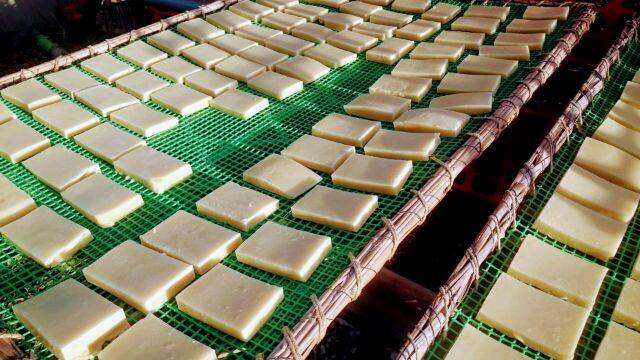
Just like its more famous cousin, frozen tofu is made with soy milk that has been curdled through the addition of bittern (a bitter-tasting solution, rich in minerals, that is obtained from seawater). Unlike regular tofu, though, it uses less water and more soy beans, making it richer in proteins.
Frozen tofu is a traditional preserved food of the Suwa area that goes back centuries. Up until 50 years ago, there used to be over 30 producers in the area, all located in the villages closest to the mountains. Nowadays, there are only two left.
Production first started as a winter occupation for farmers who, in this freezing climate, could only grow vegetables for six months a year. Here, winters are long and in the coldest months the temperature at night can drop to minus 20 degrees. However, far from being put down by the weather, the locals have found ways to make use of it. One of these being frozen tofu production.
Making Koori-tofu at the Sennen Tofu Shop
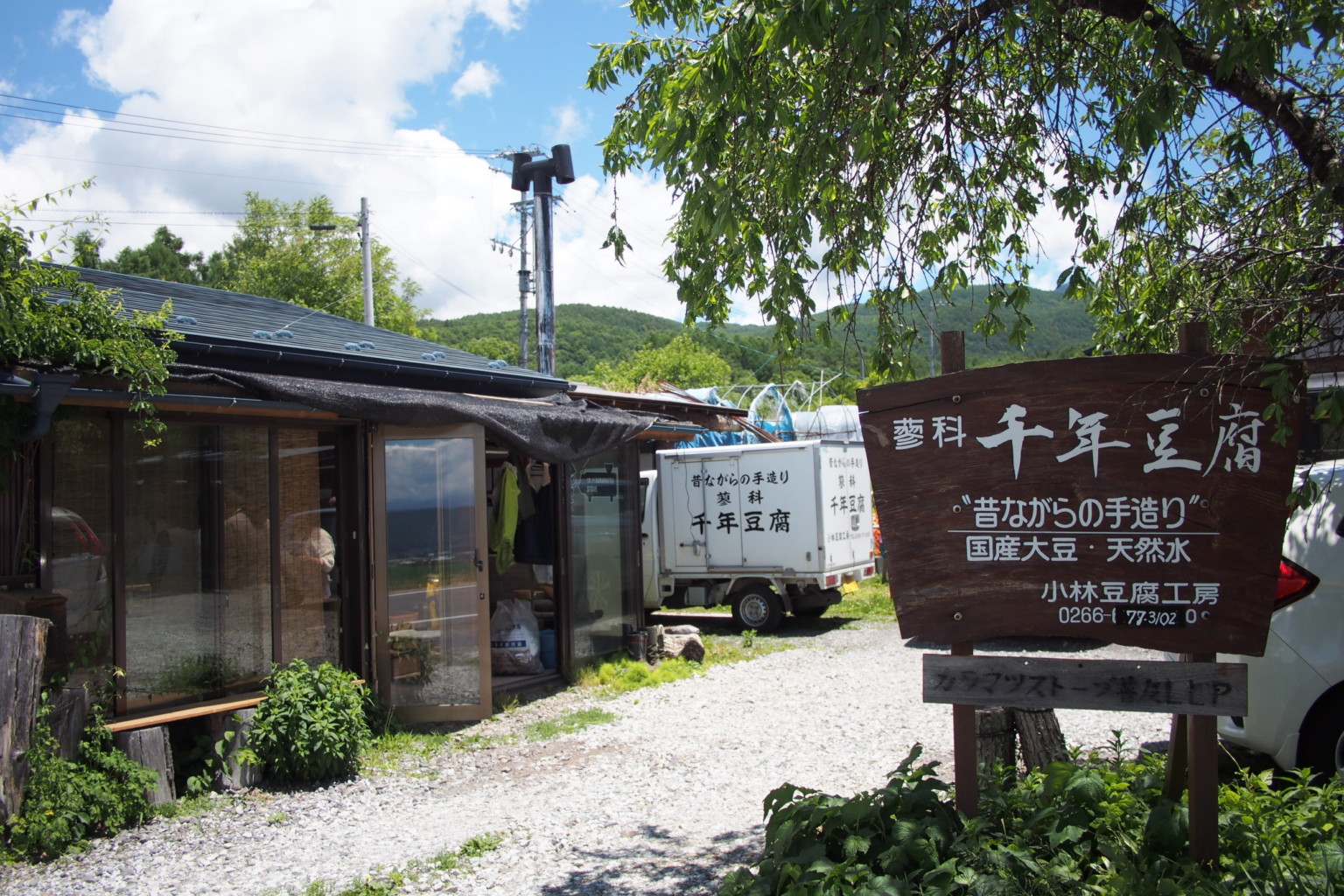
You can learn to make frozen tofu for yourself at Sennen Tofu, one of the two frozen tofu shops still in business. It is a tiny family-run shop at an altitude of 1,100 meters. The owner, Kobayashi-san, married the daughter of a local frozen tofu producer and inherited the traditional business.
When you arrive at Sennen Tofu, Kobayashi-san begins by explaining more about tofu and the history of the business. Then, he shows you inside his workshop and teaches you step-by-step the process of making frozen tofu. An English-speaking guide will join you so that you can ask any questions you like.
Before starting the process, he shows you the only ingredients he uses: local soy beans, water and bittern.
Frozen tofu is momen-tofu (“cotton tofu” in Japanese), as kinu-tofu (“silk tofu”) has never been produced in this area. Just like the types of cloth they are named after, momen-tofu is slightly grainier and textured, and kinu-tofu is softer and smoother.
When the beans have been ground and the milk has been separated from okara (remaining soy bean pulp), you can have a sip of the warm freshly-squeezed soy milk.
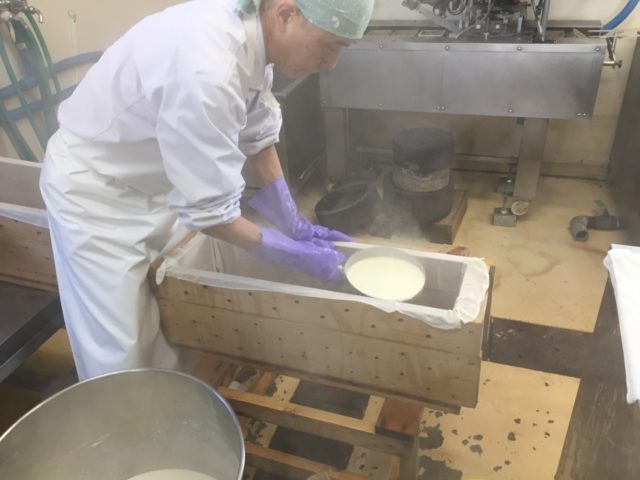
After adding the bittern to the milk and applying some secret traditional techniques, the liquid is poured into a wooden mold and wrapped in cotton cloth (see where the name "cotton" comes from?). Stones are placed on top to make sure all the extra water is eliminated. The process is repeated and when completed, the tofu is taken out of the mold and cut in slices.
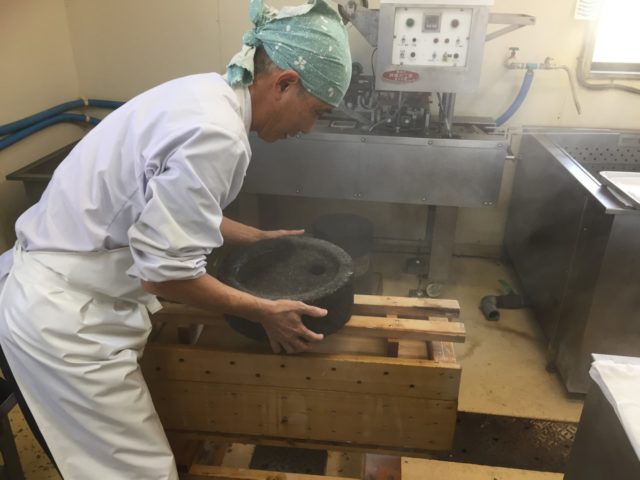
The tofu is put away until the afternoon, when it will be brought outside to freeze for 1 night under the starry sky.
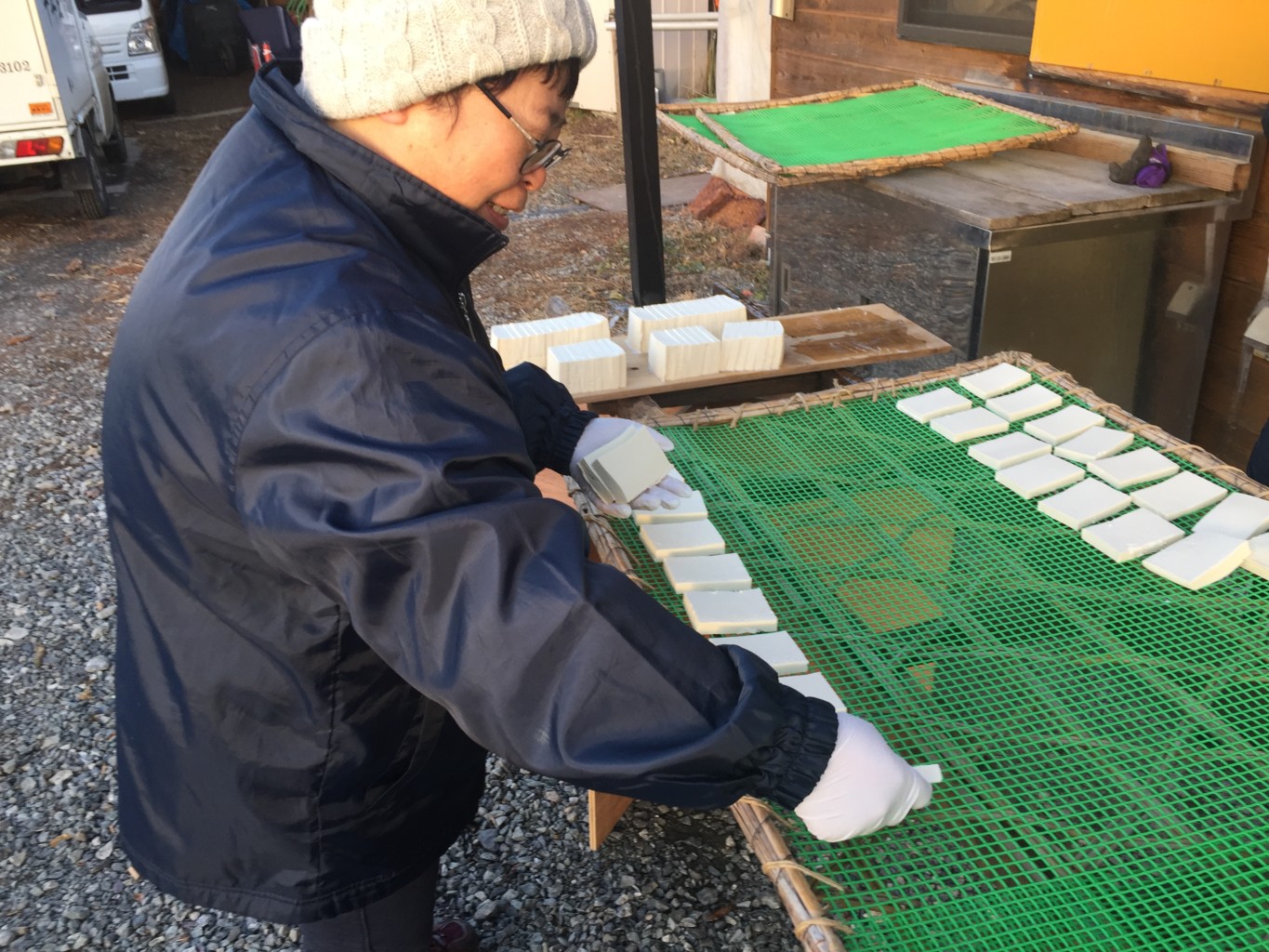
After the guide visit, you have a chance to make frozen tofu yourself. You will move to another room and, under the master’s guidance, go through the same process with smaller wooden boxes. When the frozen tofu is ready the following morning, it will be delivered to you.
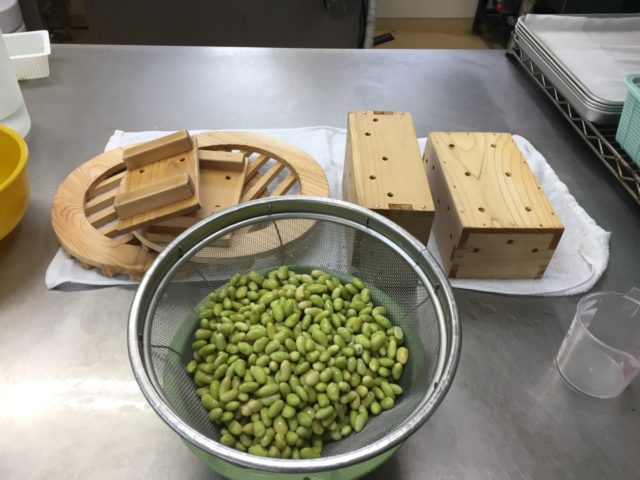
The activity concludes with a tasting of both regular and frozen tofu. There will also be other tofu-based dishes, such as salad made with okara and soy milk ten-yose (jelly-like vegan dessert).
Frozen tofu has a unique texture, very different from regular tofu. Springy and compact, but also light and delicate.
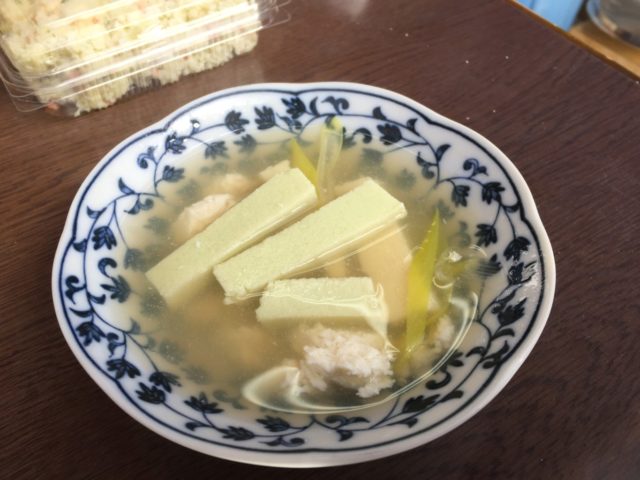
Enjoy this winter specialty! It’s only available from December to February.
Update:2019/12/26
Make your own Frozen Tofu
| Operating Period | Mid-December to the end of February |
|---|---|
| Time | 3 hours |
| Reservations | Necessary (see link below) |
| Price | 5,000 yen per person (excluding tax) |




